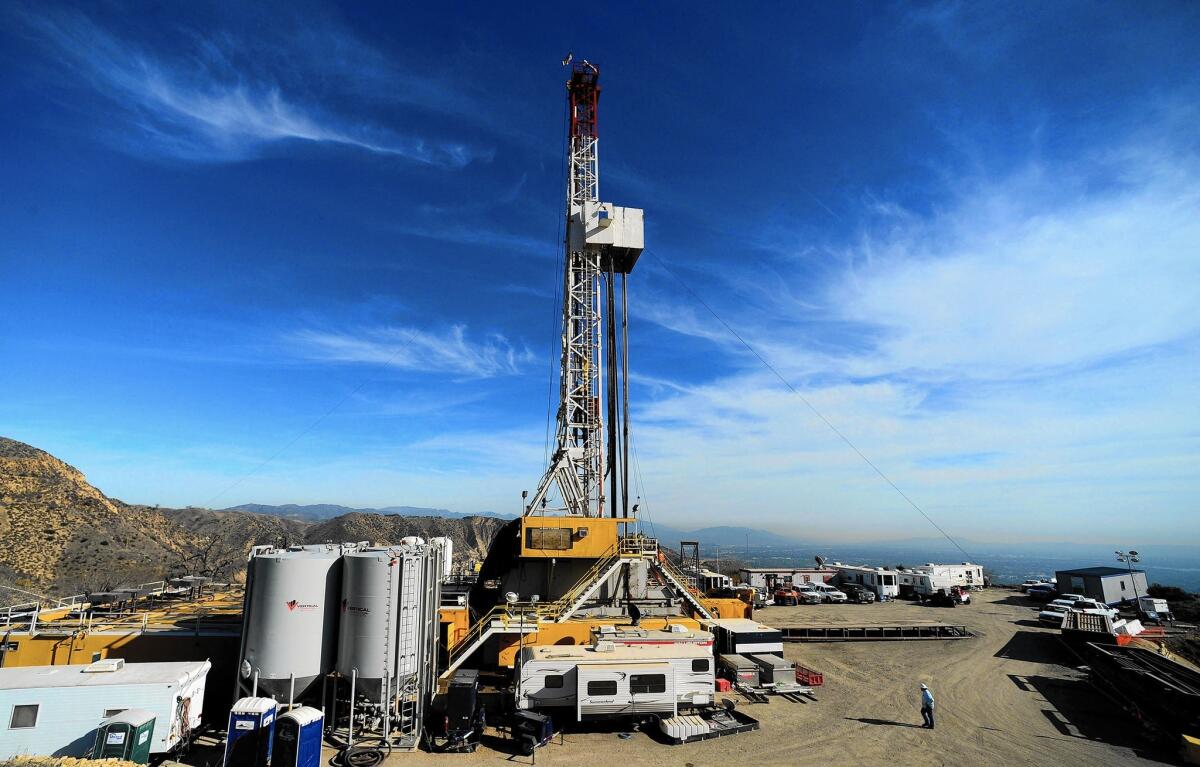How can gas company offset emissions from the Aliso Canyon leak? Regulators offer a plan

- Share via
To offset greenhouse gas emissions from the massive Porter Ranch leak, Southern California Gas Co. could pay to plug abandoned wells, install methane-gobbling digesters at dairy farms and help people buy more efficient furnaces and water heaters, state regulators say.
Those are the kinds of projects the gas company will be required to fund to make up for the damage to the climate from releasing nearly 100,000 tons of methane from its Aliso Canyon storage facility, according to a plan by the California Air Resources Board.
The utility has pledged to offset the greenhouse gas emissions from the leak. The mitigation plan was ordered by Gov. Jerry Brown in an emergency proclamation in January, and the leaking well was declared permanently sealed Feb. 18.
The pollution-cutting projects would be paid for by the gas company over the next five to 10 years, according to the proposal.
For nearly four months the well spewed methane, foul-smelling compounds and other contaminants into the air of suburban Los Angeles, driving thousands of nearby residents from their homes. Scientists have declared it the largest methane leak in U.S. history.
Methane is of immediate concern because it is a fast-acting pollutant that is many times more potent than carbon dioxide. So much of it was released near Porter Ranch that it wiped out some of California’s recent progress in reducing planet-warming emissions.
To offset the leak’s rapid heat-trapping effect on the atmosphere, the air board says most of the projects should focus on cutting methane emissions from dairies and other agricultural operations and from landfills and wastewater plants. Together, those sectors account for about three-quarters of California’s methane emissions.
The state also wants the gas company to give priority to projects that benefit the neighborhoods affected by the leak and to disadvantaged communities in Southern California.
Timothy O’Connor, who directs the California Climate Initiative for the Environmental Defense Fund, said the proposal is promising and has the potential to “cut vast amounts of pollution.”
“If done right it will reduce methane far into the future and hold the oil and gas industry accountable for its aging infrastructure,” O’Connor said.
Air-quality officials and the gas company did not have an estimate of the cost of the pollution-reduction projects.
In a U.S. Securities and Exchange Commission filing in December, the utility’s parent company, Sempra Energy, estimated costs related to the leak at $330 million, most of that for the relocation of residents. About 10% — or $33 million — is for the value of the lost gas, to mitigate the greenhouse gas emissions and other costs, according to the filing.
Spokeswoman Melissa Bailey said the company was evaluating actions it could take “to fully mitigate the climate impacts of the gas leak.” Within the next several weeks, the utility expects to provide regulators with its estimate of how much gas was released.
The Air Resources Board report calculates the methane released from Aliso Canyon was equivalent to about 8 million metric tons of carbon dioxide. That far exceeds the 1.5 metric tons of greenhouse gases California reduced statewide in 2013, the most recent year for which data are available.
Air Resources Board spokesman Dave Clegern said the leak was nonetheless a “small hit” to the state’s emissions trajectory “and will not prevent us from hitting our targets.”
The state expects to complete its final estimate of the methane emissions from the leak by this summer.
Twitter: @tonybarboza
ALSO
Why the Pico-Union Boxing Club, a godsend to youth, is at a crossroads
Trump circus rolls into Phoenix in a taste of what’s in store for California
Santa Monica firm says it has found a way to salt away electricity, literally
More to Read
Sign up for Essential California
The most important California stories and recommendations in your inbox every morning.
You may occasionally receive promotional content from the Los Angeles Times.











